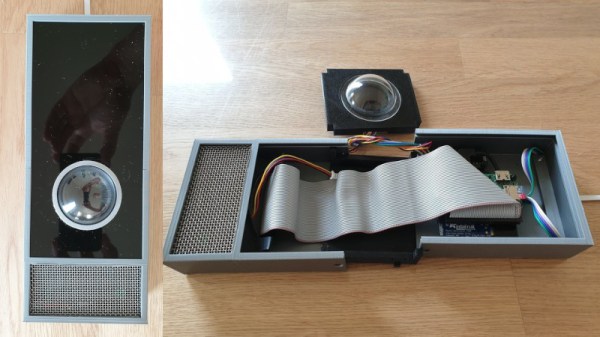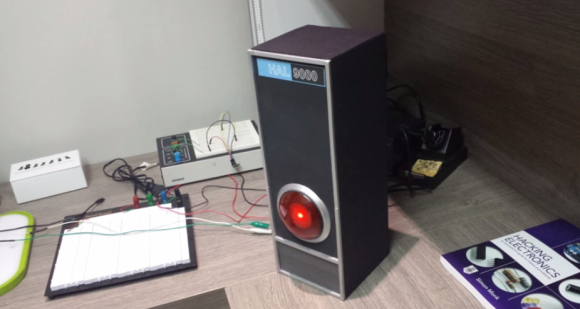Adafruit’s PropMaker Feather is a microcontroller board designed specifically for building props with electronic features. Thus, what better way to show it off than by building a nifty replica of the most menacing AI ever to roam this solar system? That’s right, it’s the Adafruit HAL9000 build!
Following the 80/20 rule, this version is intended to be reasonably authentic while remaining affordable and easy to build. It’s built around Adafruit’s existing Massive Red Arcade Button, which looks like a decent simulacra of HAL9000’s foreboding, perceptive lens. It’s placed in a case assembled from laser-cut acrylic, with a neat inkjet-printed label on top. Where previously, sound effects were courtesy of an Arduino Uno with a Wave Shield, this version uses the PropMaker Feather, based on the RP2040, instead. It’s actually possible to assemble with zero soldering thanks to quick-connect wires and screw terminals on the PropMaker Feather.
Fundamentally, if you’re building a simple prop that needs audio or LEDs, the PropMaker Feather could be a useful tool for the job. Alternatively, consider building a HAL replica with more capability, like controlling your home. Just don’t give it too much responsibility—we all know how that ends. Video after the break.















